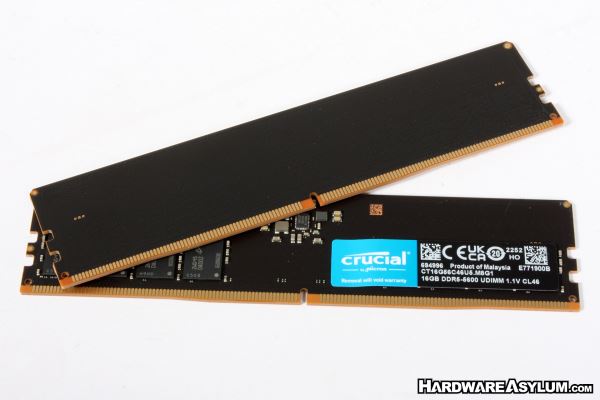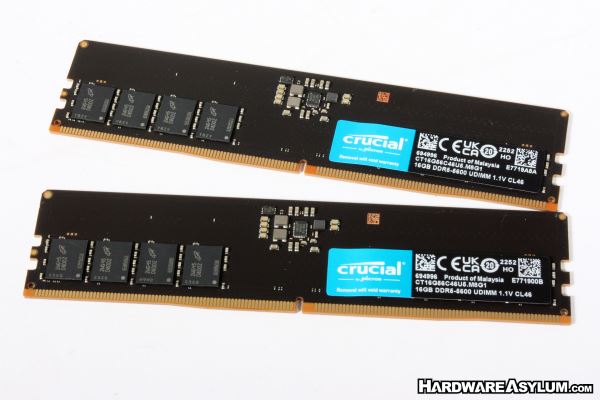Crucial 5600Mhz DDR5 Memory Review
Author: Dennis GarciaCrucial DDR5 Memory Overview
I am pretty sure that I have NEVER reviewed a memory module that was without a heat spreader and looking back through my archives, I was not wrong. For all of my personal DDR memory installations they eventually had aftermarket heatspreaders installed. Not only did he help dress up the build but they also helped them perform better under overclocking conditions.
DDR2 and later memory modules also rarely benefited from heat spreaders. Most memory makers installed them because demand was high and they offered a certain degree of protection. As with most things in the PC industry sales are driven by Cost, Looks and Performance and, lets face it, heatspreaders are highly associated with Gaming systems and that is not a primary market for Crucial

As with most Crucial memory modules they are sold bare. This is the preferred memory option for system builders and those looking to upgrade your OEM machine.
DDR5 comes with many benefits including:
- Faster load times including file transfers
- Extreme innovation for stable performance
- More responsive multitasking
- Optimized power efficiency
While many of the previous benefits come from obvious sources such as a faster memory bus the optimized power efficiency is interesting. All DDR5 memory modules start out with an operating voltage of 1.1v and feature an onboard power management integrated circuit (PMIC) that will dynamically monitor memory voltage and allow it to change based on the needs of the module. If the frequency is low, then the voltage will drop.

Combine that with on-die ECC and you have a platform for a very stable and power efficient memory system.
Crucial DDR5 Desktop Memory Features
- Up to 5600MT/s — 1.75x the data rates of DDR4
- 8, 16, 24, 32 and 48GB densities
- 2x the bandwidth of DDR42 enabled by:
- 2x the burst length of DDR4
- 2x the banks and bank groups of DDR4
- On-module power management integrated circuit (PMIC9)
- Two independent 32-bit channels per module (64 bits total)
- Improved refresh schemes
- On-die ECC (ODECC) for long-term stability10
- Intel® XMP 3.0 and AMD EXPOTM supported

